
21 Days Yunnan-Sichuan-Qinghai-Tibet Overland Tour with Yading Nature Reserve
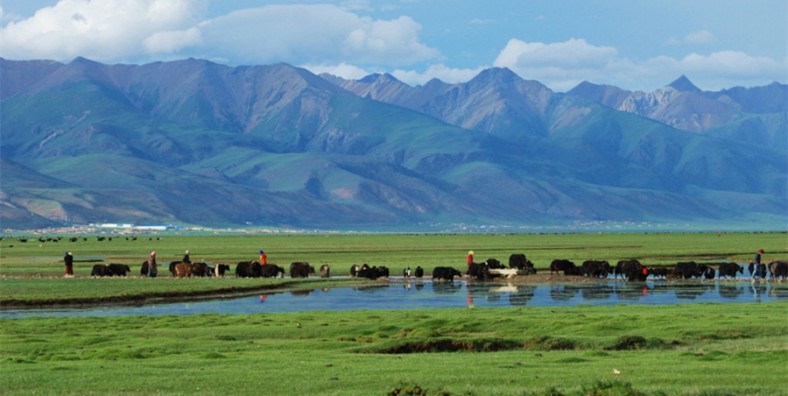
Tour Overview
This 21 Days Yunnan-Sichuan-Qinghai-Tibet Tour from Lijiang overflows with stunning scenery, and the route itsef involves part of Yunnan-Tibet highway, part of Sichuan-Tibet highway, and part of Qinghai-Tibet highway with highlights of...
Code of Tour: YCT0000001779
Length of Travel: 21 Day
Destinations of Tour: Lijiang-Shangrila-Xiangcheng-Daocheng-Riwa-Litang-Xinlong-Baiyu-Derge - Xinluhai - Manigange-Shiqu-Yushu-Qumalai - Qumahe-Budongquan – Wudaoliang – Tuotuohe- Anduo County – Naqu- Lhasa
Departure City: Lijiang
Price of Tour: Request
Type of Tour:
Features of Tour: Nature Culture Minority Landscape
This 21 Days Yunnan-Sichuan-Qinghai-Tibet Tour from Lijiang overflows with stunning scenery, and the route itsef involves part of Yunnan-Tibet highway, part of Sichuan-Tibet highway, and part of Qinghai-Tibet highway with highlights of all highways perfectly combined. Besides, you will first visit the city highlights of Lijiang and Shangri-La including the grand Tiger Leaping Gorge. Then, move on to visit the Yading Natural Reserve which is located in Daocheng and noted for its mysterious lamasteries, forests, pastures, snowclad peaks, clear lakes and primitive Tibetan villages. After Yading, you will transfer towards Lhasa with the most charming snow mountains, tranquil lakes, shimmering rivers, rare animals and Tibetan Villages on the way. Nyenchen Tangula Mountain and Namtso Lake will be the most imressive part along your way. Finally, you will arrive at Lhasa and finish your tour after experiencing the unique Tibetan Buddhism culture in the famous monasteries and palaces such as Potala palace and Jokhang temple.
Highlights:
- Visit the top attractions of Lijiang and Shangri-La including the grand Tiger Leaping Gorge.
- Lose yourselves in the extremely beautiful sceneries of Yading Natural Reserve.
- Meet snown mountains, tranquil lakes, shimmering rivers, Tibetan villages and rare animals on your way.
- Passing by Nychen Tangula Mountain, Wudaoliang, Kekexili Nature Reserve and Namtso along the way.
- Experience Tibetan Buddhism in significant monasteries along your way and in Lhasa city.
Brief Itinerary
- Day 1: Lijiang Arrival
- Day 2: Lijiang-Shangri-La
- Day 3: Shangri-La-Xiangcheng
- Day 4: Xiangcheng-Daocheng-Riwa
- Day 5: Riwa-Yading-Riwa
- Day 6: Riwa-Litang
- Day 7: Litang-Xinlong
- Day 8: Xinlong-Baiyu
- Day 9: Baiyu-Dege
- Day 10: Dege-Xinluhai-Manigange
- Day 11: Manigange-Shiqu
- Day 12: Shiqu–Yushu
- Day 13: Yushu
- Day 14: Yushu-Qumahe Town
- Day 15: Qumahe Town-Tuotuohe
- Day 16: Tuotuohe-Naqu
- Day 17: Naqu-Namtso Lake
- Day 18: Namtso Lake-Lhasa
- Day 19: Lhasa
- Day 20: Lhasa
- Day 21: Lhasa Departure
Google Map
Detailed Itinerary
Day 1 Arrive in Lijiang
Sightseeing and Activities:Black Dragon Pool, the Dongba Museum
Accommodation:Lijiang
Meals:None
Arrive in Lijiang, after landing, meet your local guide and transfer to the hotel located in Lijiang Ancient Town. If time permits, you’ll head for the scenic Black Dragon Pool and the Dongba Museum to explore the rich Naxi minority culture.
In the late afternoon, explore Lijiang Old Town. Lijiang Old Town has a history more than 800 years; it was listed as the World Cultural Heritage by the UNESCO 1997. Here you will see the wonderful wooden architecture of Naxi ethnic people. After dinner, you will attend the Naxi Orchestral Music in Naxi Concert in Lijiang Ancient Town.
Day 2 Lijiang – Shangri-La
Sightseeing and Activities:the First Bend of Yangtze River, Shigu Ancient Town, the Red Army’s Long March Memorial Monument, Stone Drum, Iron Chain Bridge, Tiger Leaping Gorge, Dukezong Ancient Town, Giant Prayer Wheel
Accommodation:Shangri-La
Meals:Breakfast, Lunch
From Lijiang, you’ll drive about 60KM to the First Bend on the Yangtze River with imposing gorge scenery, the Red Army’s Long March Memorial Monument and the Iron Chain Bridge in Stone Drum Town. The town of Stone Drum got its name from a large, cylindrical, marble tablet shaped like a drum. The scenery is magnificent as the road running through the Lijiang valley which is filled with wheat fields and drying haystacks. You will have an experience of the floating from the First Bend of the Yangtze River to Longpan Town, after one hour floating, meet the driver and trasfer to Tiger Leaping Gorge.
Visit the Tiger Leaping Gorge, the deepest gorge in the world. With 34 rapids of the Yangtze River, it is called the Jinsha in this area because you can find gold in the river. Afternoon, you’ll head for Shangri-La, the former Zhongdian which is welknown as the paradise destination for every tourist. Upon arrival in Shangri-La, you will have entered the Tibetan cultural area and a landscape of barley fields and yaks scattered in the valleys. Walk around Dukezong Ancient Town, an important town of the Ancient Tea-horse Trade Caravan from Yunnan to Tibet and India.
–Tiger Leaping Gorge is on the Jinsha River of the upper reaches of the Yangtze, located 105 kilometers south of Shangrila County. The gorge is 17 kilometers long with a drop of 213 meters. Tiger Leaping Gorge is divided into three sections: Upper, Middle and Lower Hutiao. At the narrowest spot the river is only 30 meters wide. The mouth of the gorge is 1,800 meters above sea level. The river is flanked by Yulong and Haba snow mountains, with a height difference of 3,900 meters. It is one of the deepest gorges in the world.
Day 3 Shangri-La – Xiangcheng
Sightseeing and Activities:Big and Small Snow Mountains, Zhongwenshui Village, Birang Grand Canyon, Tibetan villages
Accommodation:Xiangcheng
Meals:Breakfast, Lunch
Early morning visit to the ever growing Songzanlin Monastery. In historical terms it is very key; commissioned in the 17c by DL5, it was the central monastery in the Gelukpa order’s south-eastern expansion.
From Zhongdian head north, crossing two high passes on the way to the Sichuan border. Then the road twists and turns its way down to Xiangcheng. A wee village a few years ago, set along the Shu-chu River, today it’s a bustling rural town which has been given a massive face lift. Surrounding the city, residents still live in attractive stone houses. Its Tibetan name means ‘rosaries in Buddha’s hand’, while in Chinese historical annals it was long referred to as White Wolf State.
–Xiangcheng County:
Xiangcheng is located on the southwest tip of Ganzi Tibetan Autonomous Region of Sichuan province. It is just on the roadside from Litang,Sichuan province to Zhongdian, Yunnan province. There are 3 rivers (Dingqu, Suoqu and Mayhi flowing through this county. Xiangcheng has a elevation over 3180m and its population is around 25,000, of whom is 93 percent of Tibetans and 7 percent of Han nationality.
Its Tibetan name means rosaries in Buddha’s hand. A few years ago this was a wee village. Today, a bustling rural town, with some great restaurants and pleasant outdoor cafes, at which it’s easy to make friends with the locals. Recent years have seen quite a bit of development, with spanking new hotels and other buildings standing in stark contrast to the traditional square – shaped stone houses in which most of the residents still live. The town is surrounded by gorgeous scenery on all sides, located alongside the Shuqu River, those banks are lined with large attractive Tibetan houses.
Day 4 Xiangcheng – Daocheng – Riwa
Sightseeing and Activities:Wuming Snow Mountain (4708M); Daocheng Grassland, Sangdui pasture, Gongling Monastery
Accommodation:Riwa
Meals:Breakfast, Lunch
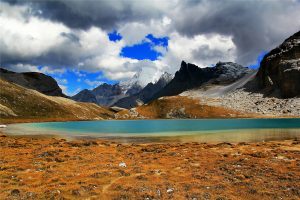
Spend a full day driving from Xiangcheng to Riwa via Daocheng. Along the way, you will enjoy wonderful panoramas of barley fields, rushing rivers, expansive grasslands and snow-covered peaks.
Drive up to the Wuming Snow Mountain (4708M).
Drive to Riwa via Sangdui and Daocheng. En route, visit Maxionggou Original Forests, Wuming Snow Mountain (4550M), Sangdui Town, blockhouse, Sangdui pasture (3840M), vast poplar garden, Rewu Monastery (Hua Sect), Bowa Mount (4300M), Chitu River Valley, Tibetan villages and Gongga Langjiling Monastery. Overnight in Riwa Town
–Daocheng County
Daocheng (稻城 or rice city in Chinese) is a county subordinated to the Ganzi Tibetan Autonomous Prefecture on the southwest border of Sichuan, China. The Daocheng county lies on the southeast of Qinghai -Tibet Plateau and the east of Hengduan Mountains, the conjunction areas of Sichuan, Yuannan and Tibet.
Daocheng, located at an altitude of 3750m, is special in geographical features. The county covers 7323 square kilometers and is higher in north and west and lower in south and east. Winding and majestic mountains like billows of the sea alternate with valleys. Hence, the high-altituded mountain peaks clad with snow all the year round, deep serene valleys with gurgling brooks and broad pastures.
Day 5 Riwa – Yading Nature Reserve – Riwa
Sightseeing and Activities:Yading National Park, Luorong Pasture, Five-Color Lake
Accommodation:Riwa
Meals:Breakfast, Lunch
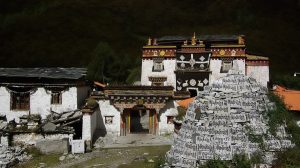
Transfer to Yading National Park;
Option A
Hike or ride horse 1 hour (4km) from Longlongba to Chonggu Temple, then take a 30 minute ride in an electric buggy to arrive at Luorong Pasture (4180m).
From here you will hike or horse ride up to Milk Lake and Five-Color Lake for breathtaking views of the three sacred peaks: Mt. Jampelyang (5958m), Mt. Chanadorje (5958m) and Mt. Chenresig (6032m). Return to Longtongba and transfer to Riwa for overnight.
Option B:
Transfer to Yading National Park; we take the green bus to Longlongba, and then hike for 2.5 hours to Pearl Lake enjoying grand views of snow-covered mountains, glaciers and rivers. Pearl Lake is nestled in the beautiful upper valley of Chenresig’s north face and lies at about 4000m above sea level. Return to Longlongba and take the sightseeing bus to Riwa for overnight.
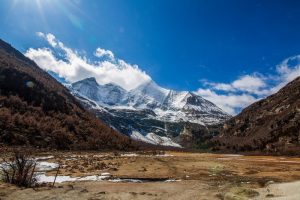
—Yading Nature Reserve
Yading Natural Reserve is located in Daocheng, a county subordinated to the Ganzi Tibetan Autonomous Prefecture on the southwest border of Sichuan Province. This national natural reserve is noted for its mysterious lamasteries, forests, pastures, snowclad peaks, clear lakes and primitive Tibetan villages. It is so beautiful that the tourists nickname it “The Last Shangri-La”, “The Wonderland of Shangri-La” and “The Last Pure Land on the Blue Planet”. Yading is a holy land for the local Tibetan, it means “the land towards the sun” in the Tebetan language. The reserve is at an elevation of 2,900 – 6032 merers and covers an area of 1,344 square kilometers. Yading was seldom known by the outside world until it was discovered by Joseph Rock in 1928. Today, Yading is still a less-visited destination in China.
Day 6 Riwa – Litang
Sightseeing and Activities:Hongcaodi Grassland, Haizi Snow Mountain ranges, Tibetan villages, Litang Monastery,Litang Grassland
Accommodation:Litang
Meals:Breakfast, Lunch
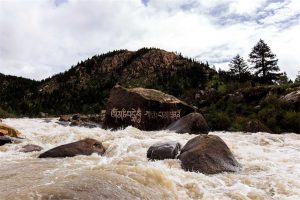
Drive for 74km back to Daocheng stopping on the way for a bath in the Rupuchaka Hot Springs. If there’s time explore Gongling Si the biggest monastery in Daocheng County and Bangpu Si, a monastery dating back to the 12th century.
Set off for Litang. This part of Sichuan province is the home of the Kham Tibetans, many of whom live a nomadic life, looking after their herds of Yaks which graze the seemingly endless grasslands of this area. Visit the Hongcaodi (Red Grassland), which is an inconspicuous wetland most of the time, but is covered with red bushes in autumn.
As we drive northwards we will pass Haizi Mountain (4600M), the largest glacial site of the Qinghai-Tibet Plateau, here is also the highest point we pass in this tour. We will arrive in Litang (Elevation: 4168m) in the early afternoon. Litang is located within lovely, rolling hills surrounded by mountains which are snow-covered year round. It is the administrative capital of the region and an important trading town for the Khampa Nomads.
(Tips: It is not suitable for those who have a severe High Altitude Action since Litang is the highest city in the world and people there feel fell they lack of oxygen.)
Day 7 Litang – Xinlong
Sightseeing and Activities:Yalong River, Zera gompa Monastery, Xinlong County
Accommodation:Xinlong
Meals:Breakfast, Lunch
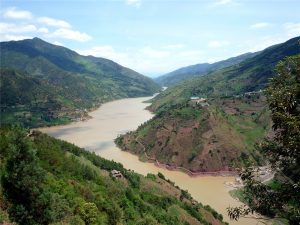
Up early to catch Litang’s superb morning views and pay a visit to Lithang Gompa, a huge monastery complex and one of Kham’s most prominent Gelukpa centres, founded 1580. After breakfast a day’s extreme back-country drive, north as the trails wends its way through forested valleys and grassland, to Xinlong, capital of Nyarong county and largely unvisited due to a road only recently completed/repaired Xinlong is a small town set alongside the banks of the Yalong River, largely unvisited due to a road only recently repaired/completed. It’s the capital of Nyarong county, a relatively poor area compared to its neighbours. Set atop the hill behind town is Zera Gompa, a teaching monastery with about upwards of 50 monks here.
Day 8 Xinong – Baiyu
Sightseeing and Activities:Nyarong valley, Yalong River, Dorkho gompa Monastery, Ding-chu River, Katok Gompa Monastery
Accommodation:Baiyu
Meals:Breakfast, Lunch
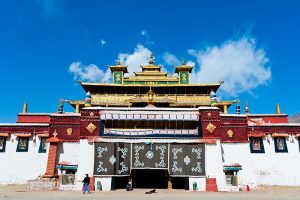
From Xinlong follow the the steep gorge of the Nyarong Valley due south into deep Nyingmapa country, following the Yalong through a forested, fairly secluded valley. Then veer west on a little travelled road past the Dorkho Gompa (Sakyapa) before reaching Baiyu, a pretty Tibetan town with tree-lined streets and the river Ding-chu flowing through it. The important Pelyul Gompa (Nyingmapa) is located atop a hill behind town. Today can choose to continue on to Katok gompa – from Baiyu follow the Yangtze (on the other side of which is the TAR) to Hepo. The early 12c Katok gompa is located 850m above town. Excepting Samye (near Lhasa) this is the oldest surviving Nyingmapa Monastery, a hugely religiously significant site, a privilege to be able to visit it.
Day 9 Baiyu – Dege
Sightseeing and Activities:Pelpung Gompa Monastery, Karma Kagyüpa School, the upper Yangtze River, Parkhang Printery House, Gonchen Gompa Monastery
Accommodation:Dege
Meals:Breakfast, Lunch
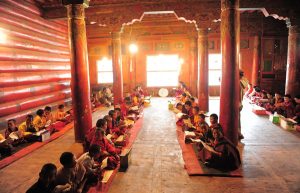
Not a whole lot of miles covered this day, so to have time to do the detour to Pelpung Gompa via a scenic narrow road. The establishment of this 18c monastery quickly made this region the centre for the Karma Kagyüpa school. It’s been designated one of world’s most important endangered monuments by World Monuments Fund. It’s a huge complex, visible for miles from its hilltop perch. Known as the Little Potala, some reckon its architecture to be Kham’s most stunning. Back on the main road, continue following the Yangtze to Dege, a remote city with a long history, once the seat of the Kingdom of Dêrge, whose kings ruled this area independent of interference from either Lhasa or Beijing. Its most famous building is the Parkhang Printery, the main source of printed materials for much of the Kham area. Today it’s possible to observe the monks at work, using the same age-old wood block techniques. Gonchen Gompa, largely gutted, has now been restored, but with the original shell largely intact.
Day 10 Dege – Xinluhai – Manigange
Sightseeing and Activities:Zi-chu river Gorge, Tro La Mountain Pass (4916m), Yilhun Lhatso Lake, Que’er Mountain Pass (6186M)
Accommodation:Manigange
Meals:Breakfast, Lunch
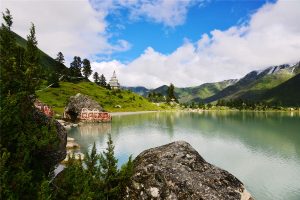
From Dege, the trail is enveloped between the steep sides of the Zi-chu River Gorge, before ascending a series of switchbacks up to Tro La (4916m), leaving behind the forests and snowy peaks to crest onto a vast grassland. Soon visible is Yihun Lhatso or Xinluhai Lake(4500m), a beautiful blue lake surrounded by snowy mountains, held very sacred by Tibetans as evidenced by all the mani stone piles and prayer flags. Weather providing, camp tonight along its banks, with the glaciered 6186m Mt. Que’er as the backdrop if lucky. Or can opt to continue to the wild west town of Manigange on the Sichuan-Qinghai ‘highway’, home to Yazer gompa (Nyingma).
Day 11 Manigange – Shiqu
Sightseeing and Activities:the huge grasslands of Amdo, the 4633m Muri La pass, Dzogchen Gompa Monastery, Zhechen Gompa Monastery, Tsatsa Gompa and Rinyur gompa
Accommodation:Shiqu
Meals:Breakfast, Lunch

Proceed north over a fantastic (and tarmacked!) stretch of road across wide nomad country rarely visited by outsiders, that foreshadows the huge grasslands of Amdo, still a couple of days north. First cross the 4633m Muri La Pass, then nearby, set in a ‘hidden valley’, is the 17c DzogchenGompa (Nyingmapa), one of the most important monasteries in Kham and a renowned school for teachings of Dzogchen. Time providing also make a detour to visit Zhechen Gompa via a pristine valley surrounded by mountains, as well as Tsatsa Gompa and Rinyur gompa, before arriving for the evening to Shiqu – recently a small concrete town filled mostly with Han Chinese PLA and police, it’s now a busy market town, mostly Tibetan. Bumnying gompa (Gelukpa) is here, home to some 200 monks.
Day 12 Shiqu – Yushu
Sightseeing and Activities:Sershul gompa Monastery, Sakyapa monastery, Gyanak Mani Stones, Jeigu Town
Accommodation:Yushu
Meals:Breakfast, Lunch
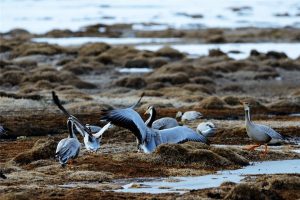
A little outside of Shiqu is the Sershul Gompa, probably the only monastery you’ll ever see built with pink (!) tiles – a large and obviously rich monastery, it’s a bit more Han Buddhist than Tibetan Buddhist, overlooking a Tibetan village. The countryside rises from hills and plains to wide open grasslands, fantastic stuff. Lunch in the tiny hamlet of Xiewu, combined with a visit to the Sakyapa Monastery set on the hillside above town. The roue then heads south to Yushu, en route passing Gyanak Mani – a football field-sized pile of mani stones which must surely be the largest such mani dui from here to Lhasa – before finally arriving at the hopping town of Yushu.
Day 13 Yushu
Sightseeing and Activities:Jiegu Monastery, Wencheng Temple, Jiegu Town
Accommodation:Yushu
Meals:Breakfast, Lunch
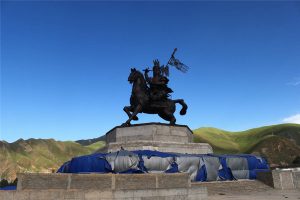
A relatively big town, there’s plenty of street life to entertain oneself, and even a few internet cafes. Jyekundo gompa (Sakyapa) on a hill overlooking town is worth a visit, before heading out of town to see some of the sites (the 7c Wencheng Temple, Benchen gompa, Trangu gompa).
— Yushu Tibetan Autonomous Prefecture
Yushu Tibetan Autonomous Prefecture (Chinese: 玉树藏族自治州) is an autonomous prefecture of southwestern Qinghai province, Western China. Largely inhabited by Tibetans, the prefecture has an area of 188,794 square kilometres (72,894 sq mi) and its seat is located in the town of Gyêgu in Yushu County, which is the place of the old Tibetan trade mart of Jyekundo. The official source of the Yellow River lies within the prefecture. Historically, the area belongs to the cultural realm of Kham in eastern Tibet. On 14 April 2010, an earthquake struck the prefecture, registering a magnitude of 6.9 (USGS, EMSC) or 7.1 (Xinhua). It originated in the Yushu Tibetan Autonomous Prefecture, Qinghai, at 07:49 local time.
Yushu Prefecture occupies most of the southwestern third of Qinghai, with the exception of the province’s extreme southwestern corner (Tanggulashan Town), which is an exclave of the Haixi Mongol and Tibetan Autonomous Prefecture. Almost all of the prefecture is located in the uppermost part of the basins of three of Asia’s great rivers – the Yellow River, the Yangtze, and the Mekong,[6] although in the remote areas of the far west of the prefecture, and along its northern borders, there are some endorheic basins as well. A significant portion of the prefecture’s territory is incorporated into the Sanjiangyuan National Nature Reserve, intended to protect the headwaters of the three great rivers.
Day 14 Yushu – Qumalai – Qumahe Town
Sightseeing and Activities:Longbaotan Nature Reserve, Hope Project School, Qumahe Town
Accommodation:Qu,ahe Town
Meals:Breakfast, Lunch
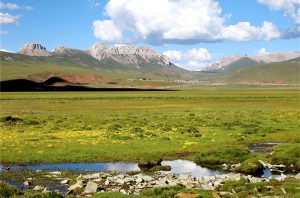
Drive to Qumalai County via Longbao(隆宝) and Zhiduo(治多).
Visit Longbaotan Nature Reserve, Located 80 kilometers northwest of Jiegu Town, the Longbaotan Nature Reserve is a long narrow basin hemmed in by mountains, with an area of 100 square kilometers. Yi Qu, a tributary of the Tongtian River, runs through the basin, forming five lakes with numerous springs. The crisscrossing lakes and marshes cut the area into sandbanks and small “islands.” The advantageous natural condition makes it an ideal home for birds and aquatic animals and plants. The black-necked cranes are finder good protection and are held a holy bird bringing good luck and happiness. More than en species of birds, such as the black-necked cranes, bar-headed 3eese, and brown-headed gulls, come to breed every March and April.
Continue the driving ahead; you will see the red flag that means there is a school. Visit the Hope Project School donated by Jiangsu Province in the village. It is better to prepare some gifts for these Tibetan students in advance. There are 200 students and 5 teachers in the school. There is a special holiday named “Caterpillar Fungus Holiday” in every May, these students will come back home and help the family to collect the caterpillar fungus in the mountain. This is the main income of local Tibetan people.
Depart the Hope School, we will have lunch in Longbao Town(隆宝镇). Drive to Qumalai County, located in the center of grassland. Before entering the county town, you will see a couplet; it means “Qumalai is the fist county of the Yellow River’s source”, because the Yellow River originates from Qumalai County. Drive to Qumahe Town for overnight.
Day 15 Qumahe Town – Budongquan – Wudaoliang – Tuotuohe (4533M)
Sightseeing and Activities:Kekexili Nature Reserve, Qinghai-Tibet Railway, Suonan Dajie Reserve Station, Chumar River
Accommodation:Tuotuohe
Meals:Breakfast, Lunch
Drive to Tuotuohe(沱沱河) Budongquan(不冻泉),Wudaoliang(五道梁), and arrive in Tuotuohe River.
From Qumahe Town, you will enter the Kekexili Nature Reserve, lies in hinterland of Qinghai-Tibet Plateau, with average altitude above 4,600 meters. Its basic relief mainly is hills, mesas and plains in large area; Mountainous region is meek, river reach and basin is capacious; there are many high mountains and extremely high mountains in the edge of northern and southern mountain regions, which is the most completely protected basic relief in Qinghai-Tibet Plateau.
BuDongQuan means “unfrozen spring” with an elevation of 4611 meters. Budongquan Reserve Station is the first reserve station of Kekexili Nature Reserve. This station is famous for the Kekexili Plateau Medical Research Base of Qinghai University, as the highest Plateau Life Science Research Institute in the world. Budongquan railway station is a station on the Chinese Qingzang Railway. Located on the southern slopes of the Kunlun Mountains in the Yushu Tibetan Autonomous Prefecture it serves a small community of the same name. The area is near the border of the prefecture’s Zhidoi and Zadoi Counties, but very remote from the main populated areas of either of them.
After Budongquan, arrive in Suonan Dajie Nature Reserve Station. In 1992 Suonan Dajie was promoted to deputy Party secretary of Zhiduo County. The first thing he did was to set up a Western Development Committee, whose mission was to crack down on illegal mining and poaching in Kekexili, and to protect and scientifically develop its resources. In July 1993, his proposal finally got approved and Suonan Dajie became director of the committee. No one understood the significance of Kekexili to Zhiduo like Suonan Dajie, recalled Zhaduo, a former assistant. In the past, there is a saying “You can enter Qumalai County, but you an not go out.” That means the road to Qumalai County is really bad. But today, the government is developing the west China; it is highway from Yushu to Qumalai, Qumalai to Budongquan highway is also under the construction. It is a long driving but fantastic scenery today; it is 160KM from Qumahe to Budongquan, 250KM from Budongquan to Tuotuohe.
About 30KM away from Suonan Dajie Reserve Station, you arrive in Chumar River which is the source of Yangtze River. Cross the Chumar River, we arrive at Wudaoliang(五道梁) about 4665 meters above the sea level. Arrive at Tuotuohe in the late afternoon,
—Kekexili Nature Reserve
Qinghai Kekexili Nature Reserve Park is located in the joint border of Zhiduo Countyand Qumalai County with 4,500,000 hectares. Its main protection targets are the unique wild plants and animals in Qinghai-Tibet Plateau and their living environments.
The area lies in hinterland of Qinghai-Tibet Plateau, with average altitude above 4,600 meters. Its basic relief mainly is hills, mesas and plains in large area; Mountainous region is meek, river reach and basin is capacious; there are many high mountains and extremely high mountains in the edge of northern and southern mountain regions, which is the most completely protected basic relief in Qinghai-Tibet Plateau. In the zone, water systems from Yangtze River converge with water system in the lake; There are inner water systems which is around lakes in west and north,in which there are many lakes. The main vegetation type are highlands plain and highlands meadow. Original biogeocenose is complete.
There are 202 kinds of first class plants, including 84 kinds of own types in Qinghai-Tibet plateau. The zone is the place for rare animals’ inhabiting and multiplying in Qinghai-Tibet Plateau. There are 16 kinds of mammals,30 kinds of birds, including 18 kinds of own animals in Qinghai-Tibet Plateau. There are 5 kinds of national first protected animals and they are snow leopards, Tibetan wild asses, wild yaks, Tibetan antelope, golden eagles; there are 7 kinds of second protected animals in national class and they are brown bears, lynxes, Tibetan gazelle, Argali sheep, Tibetan snow chicken and so on. The number of Tibetan wild asses, wild yaks, Tibetan antelope, Tibetan gazelle is large,totally 30,000-40,000. The establishment of Kekexili Reserve has very important influence on the protection and research of both rare wild animals and plants in Qinghai –Tibet Plateau and original altiplano biogeocenose.
Kekexili Nature Reserve,Qinghai Province.
Day 16 Tuotuohe –Tanggulashan Pass – Anduo County – Naqu
Sightseeing and Activities:Tuotuohe River, Tanggulashan Mountain Pass, Shengeligong Mountain Pass
Accommodation:Naqu
Meals:Breakfast, Lunch
Visit Tuotuo River in the morning, Toto, also known as River, the main peak pulse originated Tanggula Geladandong ginger root Di southwest side of the glacier, such as snow-capped mountains, glaciers near the end of 5500 meters above sea level. There are a large group of snow-capped mountains; 6000 meters above sea level more than a total of 20 xuefeng, permanent snow line up to 5800 meters, there are 40 peaks of modern cirque glaciers and many.
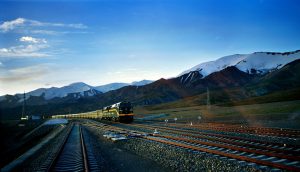
Cross the Tuotuohe River Bridge, drive through the Tanggulashan Mountain Pass at 5231 meters above the sea level. After running about 203 km (126 mi) southwards from the Tuotuo River Town, the train will arrive at the Tanggula Mountain Pass, which is the natural boundary between Qinghai and Tibet. This section is also the highest point of the Qinghai-Tibet Railway. For many years, it had been an invincible barrier to Tibet due to its high altitude, thin air and atrocious weather.
At an altitude of 5,231 m (17,162 ft), the pass is the highest point of Qinghai-Tibet Highway, while the railway is at its highest point of 5,072 m (16,640 ft). The oxygen content is only 60% of that in the plains. Although the weather here frequently changes, the area can be icy resulting in dangerous road conditions. The railway station is the highest one in the world which is why there is oxygen access in the waiting room. It has no watch but with a viewing platform, the spot is the best point to see the Tanggula Mountain.
Arrive in Anduo County(安多县) in Tibet for lunch, continue the driving across Sheng Ligong Mountain Pass at 4880 meters (申格里贡山口) and arrive in Naqu Prefecture.
Day 17 Naqu – Namtso Lake
Sightseeing and Activities:Qiangtang Grassland, Lhachen La Mountain Pass, Namtso Lake
Accommodation:Namtso Lake
Meals:Breakfast, Lunch
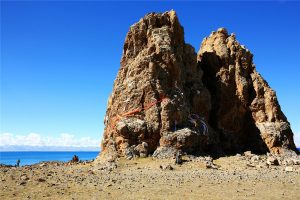
You will be relax in Naqu in the morning, then, drive on the vast Changtang Grassland and cross the 5,150 m Lhachen La Pass for Lake Namtso. Lake Namtso is the highest salt water lake in the world. It is said the holy lake and the holy mountain Nyenchentangla are a couple of lovers, who altogether guard the vast pasture and cattle. In the afternoon, you will be relax around Namtso Lake.
—Namtso Lake
Namtso Lake’s touching beauty should not be missed by any traveler who visits Tibet. Its purity and solemn are symbols of Qinghai-Tibet Plateau. The water here is a storybook crystal-clear blue. Clear skies join the surface of the lake in the distance, creating an integrated, scenic vista. Soul of every visitor who has ever been here seems to be cleansed by the pure lake water. In Tibetan, Namtso means ‘Heavenly Lake’. Namtso is famous for its high altitude and beautiful scenery. Being the second largest saltwater lake in China only after Qinghai Lake, Namtso Lake is the biggest lake throughout Tibet, also one of the three sacred lakes in Tibet. With 4,718 meters (15,475 feet) above sea level and covering 1,900 square kilometers (735 square miles), the lake is the highest saltwater lake in the world.
Day 18 Namtso Lake – Lhasa
Sightseeing and Activities:Namtso Lake, Chupu monastery , Lhasa City
Accommodation:Lhasa
Meals:Breakfast, Lunch
In the morning, enjoying the sunrise over the lake. Then drive to Lhasa, the capital city of Tibet Autonomous Region (TAR). On the way, drive into a valley to visit the Home monastery of Kargyuelpa – Chupu monastery. Arrive in Lhasa and explore the city by yourself.
—Lhasa City
Lhasa City in Tibetan language means ‘Holy City’. It is the capital of Tibet which dates back to 7th century AD when King Songtsen transferred his capital from Yarlung to Lhasa. The city is located at a height of 3,500 m above sea level in the south central part of Tibet Autonomous Region (TAR). It is the center of cultural, political and religious activities inTibet. Lhasa Town is also famous for few of the most stunning creations of hand in the entire world like Potala Palace and Jokhang Temple.
Day 19 Lhasa City
Sightseeing and Activities:Drepung Monastery, Norbulingka Park
Accommodation:Lhasa
Meals:Breakfast, Lunch
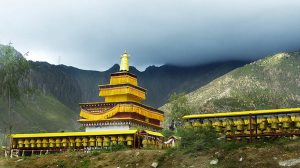
After breakfast, you are going to visit the Drepung Monastery, located in the west suburb of Lhasa City. It is one of the ‘Three Great Monasteries’ and the largest one in Tibetan Buddhism. Looking at a distance, the monastery is like a heap of rice, consisting of a group of white buildings layer upon layer. Proceeding to Lhasa Carpet Factory, you could see how an elegant, soft and colorful Tibetan carpet is weaved by locals.
In the afternoon, there is a history tour to Tibet Museum, which exhibits a number of historical relics and treasures of Tibet. After that, turn to visit the nearby Norbulingka Park, the most beautiful and largest man-made park in Tibet. This park has been built for 200 years and used to be the Summer Palace of religious leaders of Tibet.
Day 20 Lhasa City
Sightseeing and Activities:Potala Palace, Sera Monastery, Jokhang Temple
Accommodation:Lhasa
Meals:Breakfast, Lunch
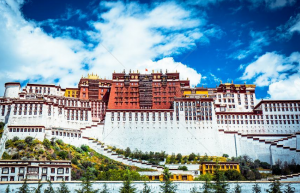
Your impressive tour to the splendid Potala Palace is scheduled in the morning. Originally built in the 7th century as an imperial palace, the Potala Palace has experienced a 600-year’s queasy time until to the reconstruction in the 17th century. From then on, it has been the political, religion, cultural and economic center of Tibet. Currently, it is the largest treasure house in Tibet, attracting a great number of travelers and pilgrims everyday. The following Sera Monastery is the second largest monastery in Tibet which is well-known for the excellent debating of Buddhist doctrines among lamas.
After lunch, you will come to the Jokhang Temple, which is located in the center of Lhasa City. Constructed in the 7th century, the peak time of Tubo Kingdom, this temple is the best architectural combination of Tibet, Han, Nepal and India. It is also a holy Buddhist temple of worshiping the rare life-size statue of Sakyamuni at age twelve. Around the temple, it is the thriving bazaar of the Barkhor Street, which assembles a large number of pilgrims, travelers, businessmen and expats. Today’s exciting tour will come to the end after visiting the Tibetan Traditional Medicine Hospital.
Day 21 Departure from Lhasa City
Sightseeing and Activities:None
Accommodation:None
Meals:Breakfast, Lunch
If time permits, you will be invited to visit a Tibetan family and get acquaintance with the local’s life in details this morning. Later, our guide and driver will transfer you to the airport for your return flight and see you off there.
Recommended Hotels
| Destination | 5 Star | 4 Star | 3 Star |
| Lijiang | Pullman Hotel | Wangfu Hotel | Liwang Hotel |
| Shangri-La | Shangri-La Hotel | Shangri-La Old Town Hotel | Moon City Hotel |
| Xiangcheng | |||
| Riwa | |||
| Litang | / | Chongcao Hotel | Mei Duo Smart Hotel |
| Xinlong | / | Danxia Hotel | Xinliang Hotel |
| Baiyu | |||
| Dege | / | Queershan Hotel | Foyuan Hotel |
| Manigange | |||
| Shiqu | / | Xiangde Nima Hotel | Shike Wangguo Hotel |
| Yushu | Gesar Palace Hotel Yushu | Sun Lake Holiday Hotel | Airport Hotel |
| Qumahe Town | |||
| Tuotuohe | |||
| Naqu | |||
| Namtso | |||
| Lhasa |
Service Included:
- Admission fees for all of the sightseeing spots listed in the itinerary;
- Meals as listed in the itinerary;
- Accommodation with breakfast as listed in the itinerary;
- Private English-speaking tour guide and vehicle for transfers & sightseeing;
- Service charge & government taxes;
- Luggage transfers between airports and hotels;
- Two bottles of mineral water each day.
Service Excluded:
- Any arrival and departure international airfares or train tickets;
- Chinese visa fees;
- Excess baggage charged by Airlines;
- Single room supplement;
- Tips to guides and drivers;
- Personal expenses and gratuities to service staff;
- Personal travel insurance;
- All optional programs;
- Domestic air tickets fares with airport tax and fuel extra fee based on economy class mentioned in the program.
Travel Tips:
- Tibet Permits
There are several permits required to visit Tibet. Tibet Entry Permit, issued by Tibet Tourism Bureau, is the most important one which has to be obtained before your trip because you must have it to take your flight/train to Tibet. To get the permit, you have to book a Tibet tour with us, and send us your passport and Chinese visa about 20 days in advance, and then let us apply for the permit (all Tibet permits can only be applied by travel agency). If you travel to other prefectures like Shigatse, Nyingchi, Shannan, etc, you also have to obtain an Alien Travel Permit. If you travel to Mount Everest, you have to obtain a Border Permit. (Tibet Discovery, with office in Lhasa, has always kept up with the latest news on Tibet Permits. Traveling with us, all your permits are guaranteed as long as you are qualified to the requirements.)
- Available Months to Visit Tibet
Generally speaking, May to early October is the best time to for a Mount Kailash trip. July and August are the peak season and rainy season. It may be too cold to travel in Kailash area from November to March. There is usually heavy snow. The conditions in Namtso Lake and Mount Everest area are quite similar with Kailash. While other places like Lhasa, Gyantse and Shigatse are suitable for travel all year around.
- High Altitude Sickness
The average altitude of Tibet is about 4000 meters above the sea level (Lhasa: 3700m; EBC: 5200m; Namtso: 4718m). You may suffer a bit from High Altitude Sickness in the beginning days of your Tibet trip if you haven’t had rich high plateau travel experience. But don’t worry too much, the high altitude can be acclimatized usually in 2~3 days. Our suggestion is to take a physical examination and get suggestions from your doctor, and also bring some medicines to prevent from High Altitude Sickness before your trip. While in Tibet, you should keep warm all the time, avoid strenuous activities, drink more water and eat more vegetables and carbohydrates. You’d better not take showers during the first two days after your arrival at Tibet. If you don’t feel well, get help from your tour guide or go to the hospital without any delay.
- How to Go to Tibet
Basically you have two options – flight and train. Currently, you can take a flight to Lhasa from Beijing(4.5hrs), Xian(3.7hrs), Chengdu(2.5hrs), Chongqing(3hrs), Kuming(3hrs), etc. Among all these cities, Chengdu and Xian have more frequent flights to Lhasa. Kathmandu also has several flights to Lhasa each week.
If you a train travel, you can take a train to from Beijing(40.5hrs), Xian(32hrs), Chengdu(43hrs), Shanghai(47hrs), Chongqing(42hrs), Lanzhou(25hrs), Xining(22hrs), Guangzhou(54hrs).
- Packing and Wearing Ideas
Firstly you can’t forget your passport and Chinese Visa. A large backpack and a smaller one are recommended (the smaller one can be used for daily activities). Also bring the necessary medicine you need. Other stuffs like sunglasses, snow glasses, hats, lip balm, sun block are recommended. As for wearing, you are suggested to dress in layers (both thin and thick jackets). Down jacket is necessary in Spring and Autumn. A pair of durable and comfortable shoes is necessary.


















1) Please send me an estimate (cost) for 3-star (single room) and 4-star (single room) accommodation.
2) Also, I would like to start and end the tour at Chengdu, since that is the closest from India (via Bangkok).
3) Dates of tour/s